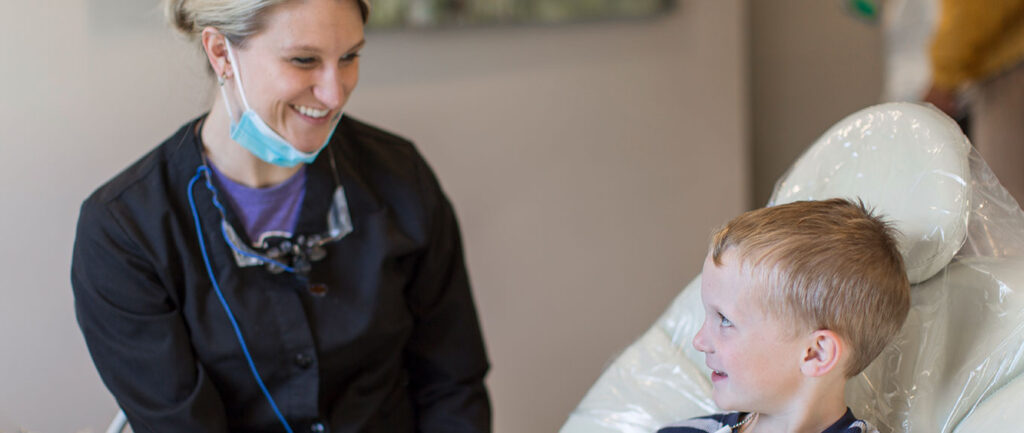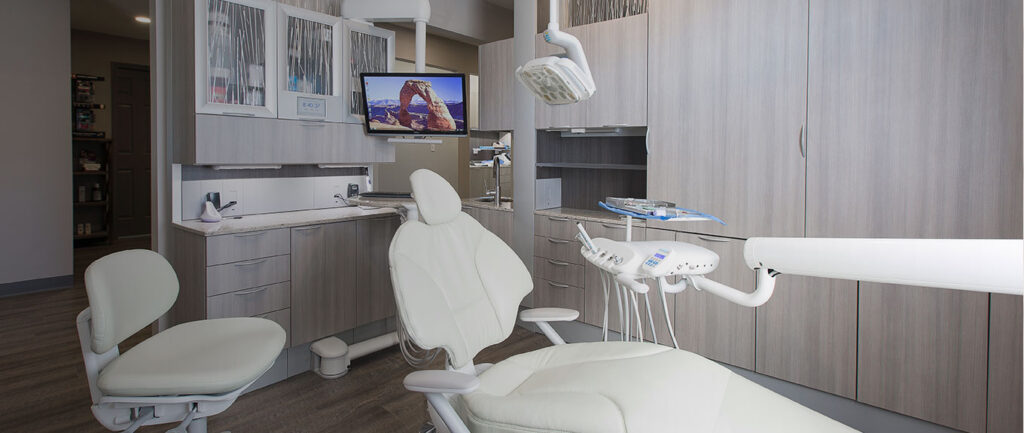The Role of Routine X-Rays
The reasons for routine x-rays are to detect problems in areas that are not visible to the human eye. Such areas are in between teeth and under existing dental work. We use digital technology, which means very little exposure of radiation for the patient.
Regular check-ups should be scheduled at least every 6 months to maintain optimum dental health. Call and set up an appointment today!
Periodontal Treatment
Periodontal disease (also known as gum disease) is an infection of the gum and bone that support the teeth. If periodontal disease is not treated, it can get worse and lead to tooth loss. A patient may be unaware of a problem until their gums and supporting bone are damaged.
Warning signs of gum disease:
-
- Gums that bleed when you brush or floss
-
- Red, swollen or tender gums
-
- Gums that have pulled away from your teeth
-
- Bad breath that doesn’t go away
-
- Pus between your teeth and gums
-
- A change in the way your teeth fit together when you bite
-
- A change in the fit of partial dentures
The cause of periodontal disease is a sticky film of bacteria that is always forming on your teeth called plaque. If teeth are not cleaned well, plaque bacteria can cause your gums to become inflamed. Inflamed gums can pull away from the teeth, forming spaces called “pockets”. These pockets trap more plaque that cannot be removed with tooth brushing. If the pockets are not treated, the periodontal disease can get worse.
Treatment
Fortunately, periodontal disease often can be treated with a deep cleaning called “scaling and root planing”. This procedure involves carefully removing plaque and tartar down to the bottom of each periodontal pocket. The tooth’s root surfaces are also cleaned and smoothed. This allows the gum tissue to heal and reattach to the tooth and is usually done in two appointments.
At follow-up visits, the dentist or hygienist measures the pocket depths to see if scaling and root planning has been successful. If the periodontal pockets have deepened and the supporting bone is lost, more treatment may be necessary. You may be referred to a periodontist.
How can I prevent periodontal disease?
-
- Brush your teeth twice a day with fluoride toothpaste.
-
- Floss or use another between-the-teeth cleaner daily to remove plaque and food from areas your toothbrush can’t reach.
-
- Your dentist or hygienist may recommend using a mouth rinse or other products.
-
- Eat a healthy diet and limit sugary snacks.
-
- Visit your dentist regularly. If plaque stays on your teeth, it hardens into tartar. Professional cleanings are the only way to remove tartar, which traps bacteria along the gumline.
Are you at risk?
-
- Tobacco: People who smoke or chew tobacco are more likely to have periodontal disease.
-
- Diseases that affect the whole body – such as diabetes – lower resistance to infection and makes a patient at a higher risk for periodontal disease.
-
- Medications, such as steroids and blood pressure drugs, can affect your gums. Some have side effects that reduce saliva, which can affect soft tissues and make tooth decay more likely. Tell your dentist about all the medications you take and any changes in your health.
-
- Teens, pregnant women and those taking birth control pills face changes in hormone levels. These changes can cause gums to become more sensitive to plaque bacteria.
-
- Genes may play a role. If your parents have a history of tooth loss, be extra alert for changes in your gums.
-
- The bacteria that cause periodontal disease may be passed from parents to children and between partners through saliva.
CBCT Scans
What is a CBCT scan?
3D cone beam computed tomography (CBCT) is an imaging technology that allows dentists to quickly and efficiently diagnose conditions affecting your jaw, gums, and breathing. During a CBCT scan, the imaging machine rotates entirely around the patient’s head. In less than a minute, about 150-200 images are captured from a variety of angles and compiled into a single 3D image.
CBCT scans are quick and, in most cases, a full mouth scan only takes about 20-40 seconds. When having a CBCT scan taken, you can expect to be seated while an x-ray arm slowly rotates around your head. To ensure your head remains still during the scan, your dentist may have you rest your head against part of the machine and/or use stabilizers in or around your ears to gently hold your head in place.
In case you are wondering, dental CBCT scans do use radiation, however they use significantly less radiation than traditional CT scanners and are considered to be safe. At any given time, we are all exposed to what is known as background radiation. A medical CT scanner produces enough radiation to be equivalent to 63-154 days of background radiation, while a localized dental CBCT scan only produces about 6-30 days of background radiation.
What Can a Dental CBCT Scan Help Diagnose?
As a dental CBCT x-ray can give your dentist an in-depth view of your teeth, jaw, nerves, and sinuses – it can help detect and diagnose many diseases. These diseases and complications include:
-
- Airway sleep disorders such as sleep apnea
-
- Bone cancer, tumors, or cysts
-
- Tooth root infections, root canals, or other problems with the core of the tooth Periodontal issues
-
- Nasal Anatomy, include: septum, turbinates and sinuses.
Dr. Beussink will likely recommend a CBCT scan if you are needing wisdom teeth taken out or if you are considering dental implants because it can provide a detailed picture of your bones, nerves and soft tissues. Since a single CBCT scan show these potential dental issues it will help Dr. Beussink to determine if dental implants can be safely and effectively placed.
Not only are CBCT scans used to determine candidacy for having dental implants placed, but they are also used as part of the treatment planning phase. A large part of successful treatment outcomes involve careful planning before the actual procedure, and CBCT scans allow your implant dentist to do just that. Since a CBCT scan shows all your bones, nerves, and teeth in extreme detail, this allows your dentist to establish their approach before they even begin the procedure. Not only that, but it also allows them to identify possible complications ahead of time so that they can take the necessary steps to avoid or minimize these complications. Overall, this means that your dental treatment will go smoother and you are more likely to have a successful outcome.


